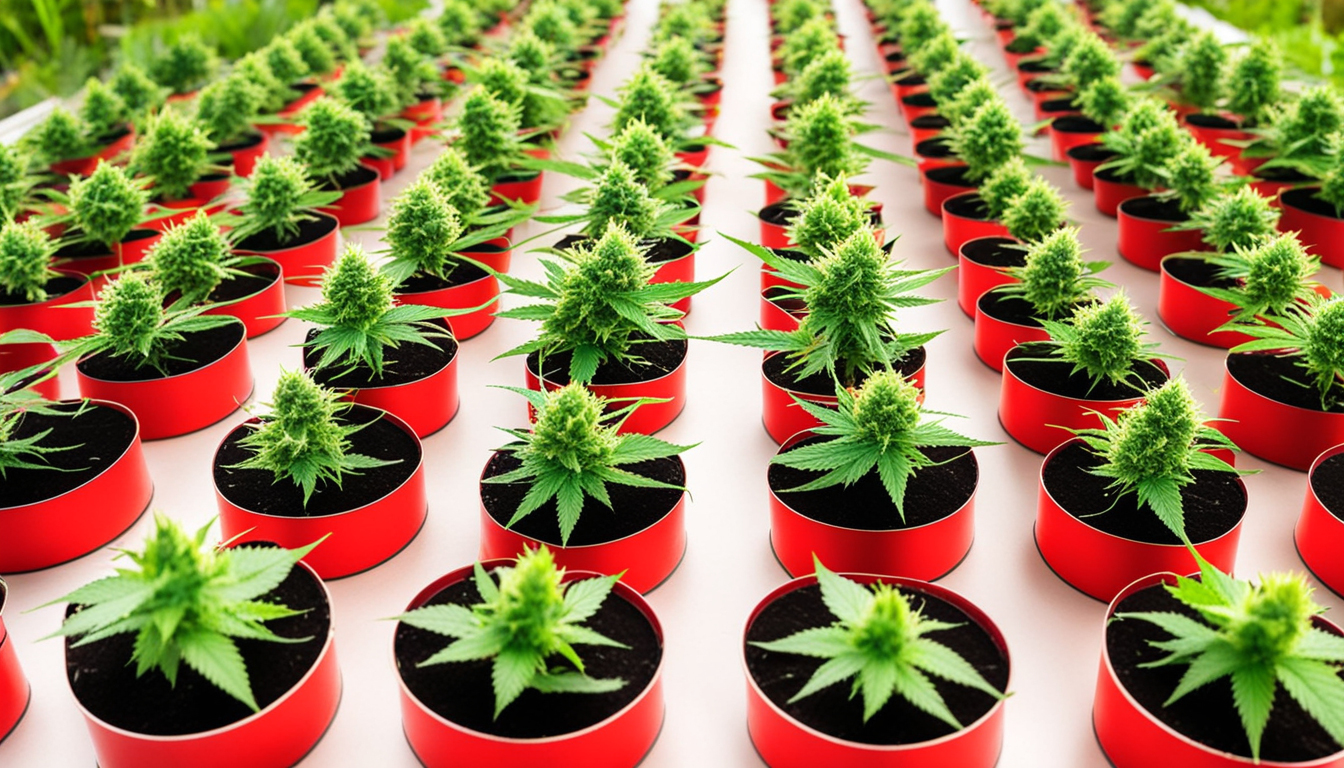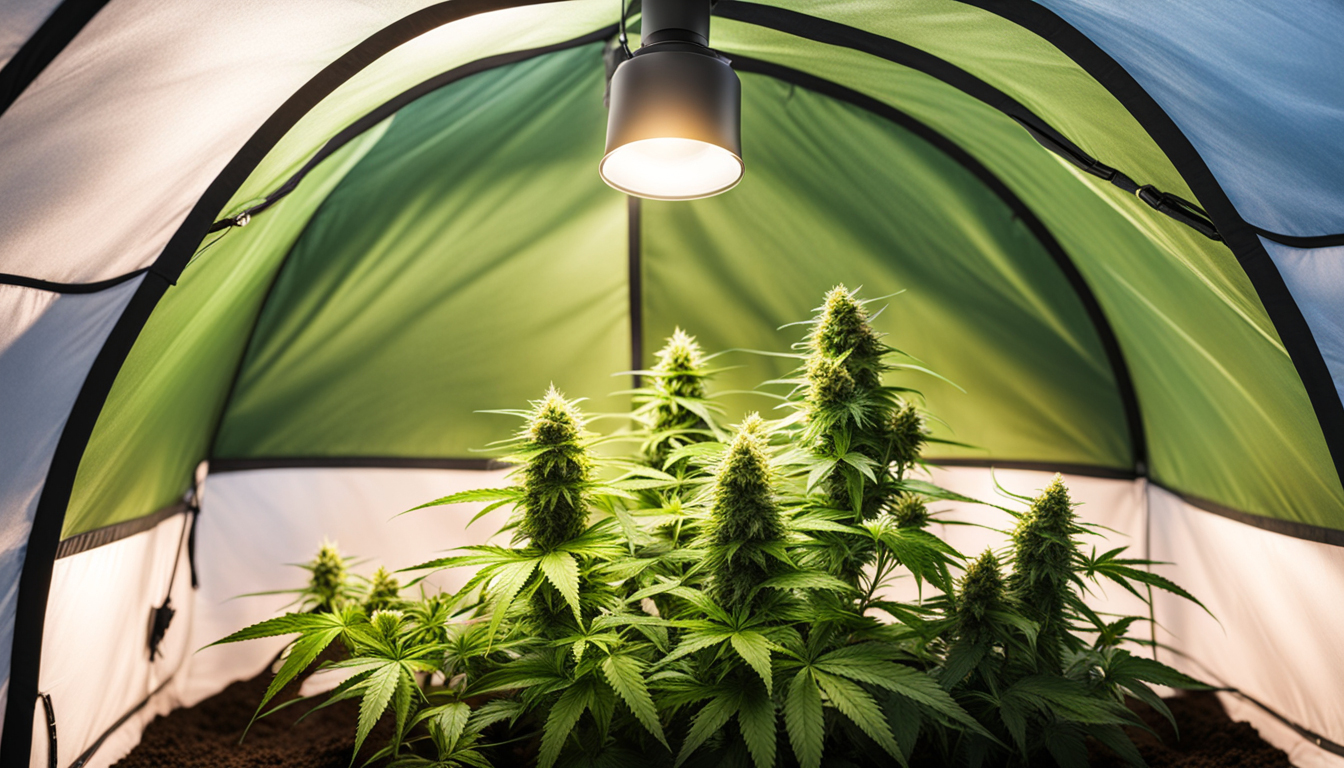
Whether you're beginning weed growing or looking to improve your existing harvest, following this complete guide will help you produce large, high-quality yields right at home. With the right gear, methods, and attention, cultivating cannabis indoors can be an extremely rewarding and cost-effective endeavor.
Choosing Marijuana Varieties
The first step in planning your indoor harvest is choosing the right cannabis strains to cultivate. The three main types of cannabis plants each have their own characteristics.
Sativas
Known for their invigorating intellectual effects, these strains spread tall and slender with narrow leaves. They flourish in tropical equatorial climates and have a longer flowering time between 10-12 weeks indoors. Top sativa strains include Jack Herer, Durban Poison, Super Lemon Haze, and Jack Herer.
Relaxing strains
These strains provide calming body-focused effects and spread short and bushy with broad leaves. Adapted to cooler mountain climates, they flower faster within 8-9 weeks. Popular indica strains include Granddaddy Purple, Northern Lights, and Bubba Kush.
Mixed strains
Mixed varieties mix traits from both energizing strains and relaxing strains. They offer blended effects and have medium blooming times around 2.25-2.5 months. Popular mixes are OG Kush, Girl Scout Cookies, and Blue Dream.

Setting Up Your Grow Space
Pot plants need the right controlled environment to succeed. Key factors for indoor cultivations are lights, ventilation, layout, and finding the ideal discreet location.
Location
Choose an unused space with direct access to irrigation and power outlets. An empty extra bedroom, unused closet, basement corner, or grow tent locked away in a garage all make great discreet cultivation room spots.
Lighting
Marijuana requires strong light for all growth stages. LEDs are efficient and come in full spectrum options mimicking real sunlight. Cover 250-400 watts per sq. ft for the vegetative stage and 20-40 watts per sq. ft. for flowering.
Ventilation
Proper airflow and exhaust systems keep ideal temperature, moisture, and pure CO2 levels. Set up silent 4-6 inch blowers or carbon filters to refresh old air and eliminate smells.
Layout
Optimize your space by arranging plants carefully under the lamps and leaving room to reach and work around them. Set up separate zones for vegetation, bloom, drying, and propagation.

Growing Substrates
Marijuana can be grown in various substrates, each with pros and cons. Pick a appropriate option for your specific setup and cultivation style.
Soil
The classic medium, soil is inexpensive and easy for new growers. It provides great taste but needs more watering and nutrients to nourish plants. Enrich soil with vermiculite or coco to enhance drainage.
Coconut coir
Made from coconut husks, renewable coconut fiber retains water but still lets in air to the roots. It's cleaner and more predictable than soil. Use coir-specific nutrients to prevent accumulation.
Hydroponics
In water systems, plant roots grow directly in fertilizer water solution. This allows quick growth but needs close observation of water properties. Deep water culture and drip systems are popular techniques.
Germinating Seeds
Sprouting prepares your weed seeds to start growing taproots. This readies them for planting into their growing medium.
Towel Method
Put seeds between damp paper towels and maintain them moist. Check after a week for growing taproots showing sprouting is complete.
Direct Planting
Insert seeds right into pre-moistened growing medium 6mm deep. Gently water and wait Find Out More 7-14 days until sprouts push through the top.
Cubic rockwool
Soak rockwool cubes in balanced water. Place seeds 6mm deep into the cubes. Keep cubes moist until seedlings appear within a week to 2 weeks.
Repotting Seedlings
Once sprouted, pot seedlings need to be repotted to prevent crowding. Move them into appropriately sized containers.
Ready Containers
Load large pots with growing medium amended with time-released fertilizer. Allow containers to absorb water for 8-12 hours before repotting.
Carefully Transplanting
Gently separate young roots from sprouting medium using a spade. Place into prepared container at same depth as before and gently water in.
Growth Stage
The growth stage promotes leafy growth and plant structure through 3/4 to full day of continual lighting exposure. This stage usually lasts 4-8 weeks.
Providing 18-24 Hours of Light
Use grow lights on a 24 hour cycle or natural sunlight to initiate nonstop growth. Lamp intensity influences size and internodal spacing.
Fertilizing
Use vegetative stage fertilizers richer in N. Make sure pH stays around 6.5 for proper nutrient absorption. Feed 1⁄4 to 1⁄2 concentration after 14 days and strengthen slowly.
Training Techniques
Fimming, LST, and scrogging manipulate growth patterns for even canopies. This boosts yields.

Bloom Stage
The blooming stage develops buds as plants show their sex under a 12/12 light timing. It lasts 2-3 months based on variety.
Changing Light Schedule
Switch grow lights to 12/12 or place outdoors for outdoor 12 hour cycle. This signals plants to start blooming.
Flushing
Leaching removes nutrient salts to improve flavor. Feed lightly the first weeks then just use plain water the last 2 weeks.
Flushing
Maintain 12/12 light timing but flush using neutral pH water only. Return to plain watering if buds aren't ripe after two weeks.
Reaping
Knowing when cannabis is completely mature delivers peak potency and aroma. Harvest plants at optimal ripeness.
Identifying Ripeness
Look for fading pistils, swelling calyxes, and 5-15% amber trichomes. Inspect buds around the plant as they don't all ripen evenly.
Harvesting plants
Use clean, sharp pruning shears to gently cut each plant at the base. Leave 5-10cm of stem attached.
Drying
Suspend whole plants or branches inverted in a dark room with moderate temp and humidity around 50-60% for 1-2 weeks.
Curing
Curing keeps drying while improving the buds Request More Info like aged spirits. This process mellows bitterness and further develops terpene contents.
Jars and Humidity
Trim cured buds from stems and store into sealed containers, filling about 75% capacity. Use a hygrometer to monitor container humidity.
Opening jars daily
Open containers for a few hours each day to gradually reduce humidity. Rehydrate buds if humidity goes under 55%.
Final Cure
After 14-21 days when humidity levels off around 55-65%, do Contact Us Today a final manicure and store forever in sealed jars.
Troubleshooting
Even experienced growers run into various cannabis plant problems. Detect issues soon and address them correctly to maintain a strong garden.
Nutrient Deficiencies
Chlorosis often indicate inadequate nitrogen. Purpling stems and leaves signal phosphorus deficiency. Test pH and increase fertilizers gradually.
Pests
Spider mites, fungus gnats, thrips, and nematodes are common pot pests. Use neem oil sprays, predator bugs, and sticky traps for organic control.
Mold
Excessive moisture encourages botrytis and bud rot. Increase airflow and circulation while reducing humidity under 50% during bloom.

Summary
With this complete indoor cannabis growing guide, you now have the knowledge to grow plentiful strong buds for private grows. Follow these steps and methods during the germination, vegetative, and flowering stages. Spend in good gear and carefully monitor your plants. In time, you'll be rewarded with sticky fragrant buds you raised yourself under the loving care of your green thumbs. Happy growing